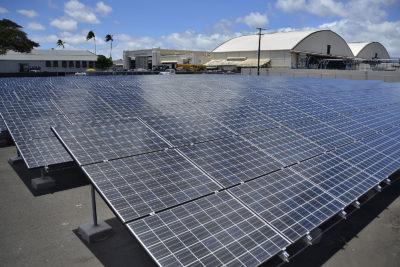
New discoveries in science are happening every day. However, this week, an undisturbed Egyptian tomb and new research in reaching solar energy’s full potential made top headlines.
1. 3,500-year untouched tomb discovered in Luxor
In Dra’ Abu el-Naga, a couple who lived in the 18th dynasty in Egypt are buried side-by-side with all other coffins, statues and pottery. Amenemhat and his wife Amenhotep were goldsmiths in the 15th century, whose jewelry and shabti figurines pointed to the ritual preparations for the afterlife.
However, the most interesting part about this find was not the numerous artifacts, but the intact context they were found in has not been disturbed for 3,500 years.
Kathryn Bard, an archaeology professor and director of undergraduate studies in the Department of Archaeology at BU, said the pristine find was “rare.”
She explained the importance of finding the artifacts gives more information on the couple’s lifestyle and belief in the afterlife.
“Everyone wanted to be buried with grave goods, they would have been provided with everything they needed according to their means,” she said. “A king, for example, would be provided with a lot more than just gold.”
She explained that the artifacts found in the tomb would relate to the person’s profession in the same way, thus why it is deduced his occupation was a goldsmith.
Bard noted her surprise when she found out the tomb was left intact and not looted, saying that it almost never happens. She explained that the original context provides so much more information of their culture and lives.
“Archaeologists can analyze for diseases, see how they lived, and better see what they think about the afterlife,” she said.
2. Solar energy does not reach its potential because of bad air quality
New research shows that up to 25 percent of solar energy captured in solar panels is lost due to air pollution in highly populated areas.
Particles of dust and a general haze block the solar panels from reaching their full potential. Even more, once dust settles on the panels, they block sunlight from ever reaching their surface. While these particles can come from natural causes, they can also come from man-made emissions. These were especially prevalent in highly-populated countries like India and China.
However, this phenomenon is a widespread problem seeking for solutions, even in Boston.
Jacqueline Ashmore, director of research and outreach activities at the BU Institute for Sustainable Energy, discussed how air pollution reaches farther than just the effects on solar energy.
“If you can maintain good air quality you have a good public health and produce maximum power from your solar panels,” she said. “One of the ways you can do a lot around air quality is having a tree canopy which also reduces your urban heat island effect.”
Besides that, there are research projects at BU that are innovating new ways to solve this problem that Ashmore mentioned.
Most notably, the team of BU engineering professors Malay Mazumder and Nitin Joglekar have developed a transparent electrodynamic system that self-cleans the panels. This produces an electrodynamic system that causes the dust particles to be exposed and move in waves.
The team has previously received grants from NASA, the Department of Energy and the Massachusetts Energy Council, along with other funding that raised their total amount to $1 million.
Ashmore also mentioned that the Institute for Sustainable Energy has been chosen by the City of Boston in their goal to become carbon neutral by 2050.
“The ISE has a contract with them to do the emissions analysis and reductions in four sections: power, building, transportation, and waste,” Ashmore said.



























































































































